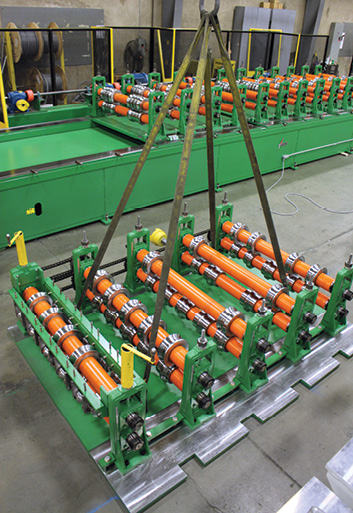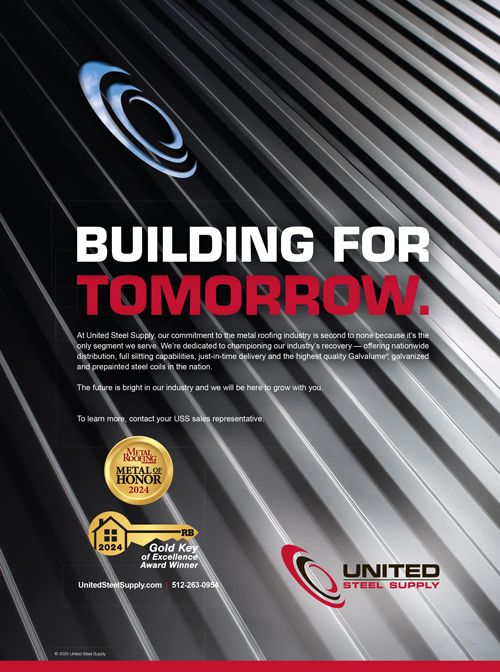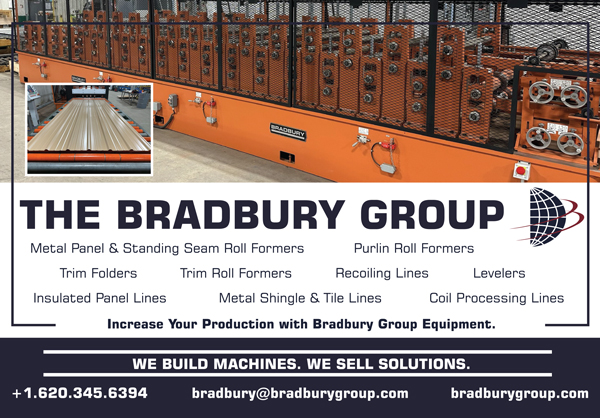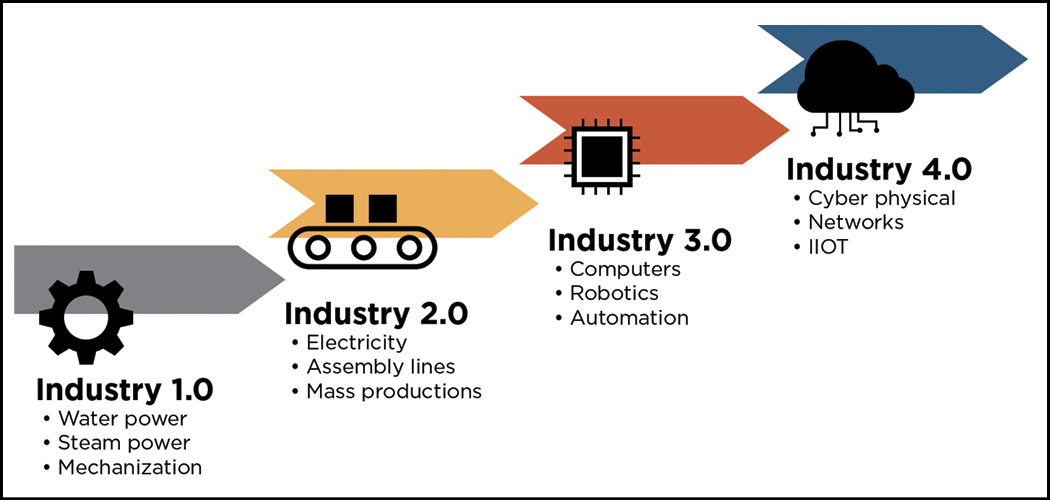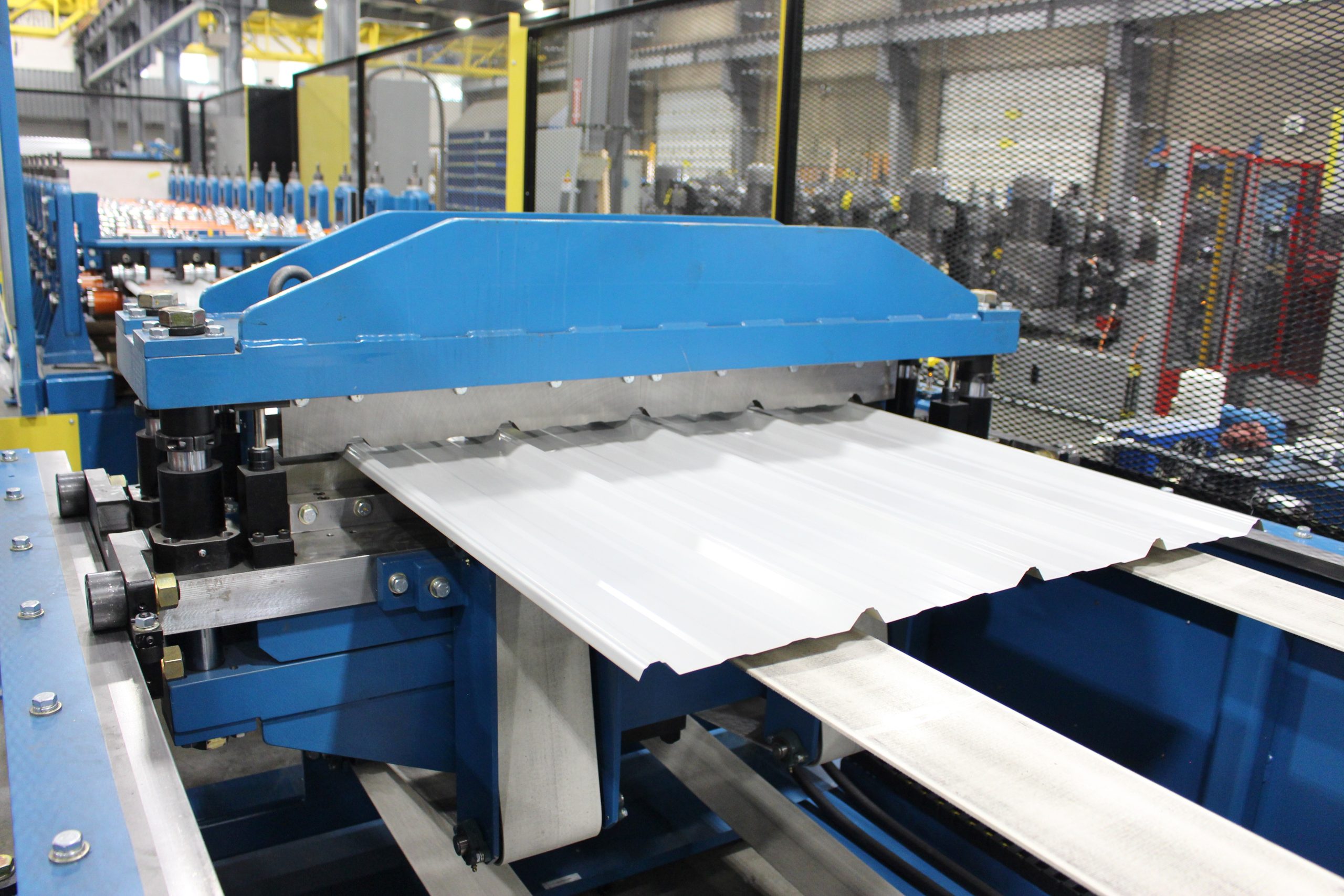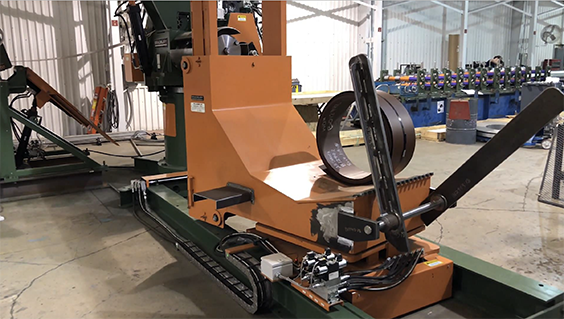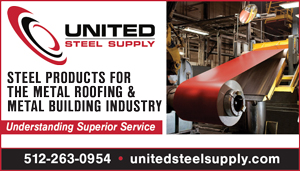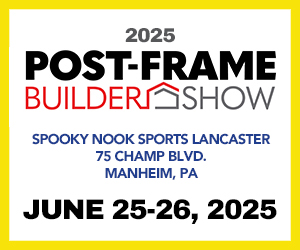■ By Chris Cox, JD
Smart buyers ask smart questions. Roll-forming equipment is not “one size fits all”; it is highly specialized equipment that varies widely in quality, performance, and features. By asking the following 10 questions, a buyer can gain the knowledge necessary to make an informed decision on which roll former is the best fit for its needs.
1. Where is the equipment manufactured? Made in the USA is more important than ever. A global pandemic and trade wars have disrupted supply chains, and getting spare parts and service for foreign-made equipment can be extremely difficult if not impossible. U.S.-based manufacturers should have an inventory of spare parts at their facility that can be shipped quickly and service technicians who can travel to customers’ factories when needed.
2. What is the roll-forming line’s throughput speed? Throughput Speed is the speed that a roll-forming line can produce finished panels. For example, an ASC Alpha Series® roll-forming line has a net throughput speed of 120 feet per minute (based on 20-foot panels), so a manufacturer can produce six 20-foot panels per minute. Roll-former Speed, in contrast, simply means how fast the shafts and dies can turn and does not take into consideration the time it takes to shear the panel, shear time, and part separation between the panels. Thus Throughput Speed is the measure of a roll-forming line’s performance that smart buyers should consider.
3. What Throughput Speed is Right for My Operations? Faster throughput speed equals higher roll-forming equipment prices. How much is a buyer willing to spend to achieve a throughput speed of 200 feet per minute or faster? Does the buyer have a high enough demand for its panels to justify spending more for faster throughput speeds? Will the buyer need an automated stacking system to handle the faster throughput speed? Smart buyers work with their roll-forming equipment sales professional to determine what throughput speed makes the most sense for their operations.
4. What is the equipment footprint? Manufacturing floor space is extremely valuable, and equipment buyers should consider the footprint of the equipment when making a purchasing decision. For example, an ASC Alpha Series® roll-forming line’s footprint is less than 40 feet, while other panel lines can be 55 feet or longer. Smart buyers take the equipment footprint into consideration when purchasing a roll-forming line and request a drawing showing the dimensions of the equipment from the manufacturer.
5. Precut or postcut: Which option is best for me? There are advantages and disadvantages for both precut and postcut roll-forming lines, and the right choice depends on what panel profile the buyer wants to produce, whether the buyer intends to produce a significant number of panels shorter than 40 inches, whether the buyer can accept the panel end flare associated with some precut roll formers, and other specific requirements for that buyer. The buyer should discuss the pros and cons of precut and postcut roll-forming lines with the sales professional to make the best decision for its specific operation. Buyers Beware: Some manufacturers only offer one model (i.e precut only) and may only emphasize the advantages of the model they manufacture, whereas other manufacturers offer precut and postcut options to meet the customer’s requirements and preferences.
6. What type of shear is on the roll former? The type of shear on the roll former makes a significant difference in performance. The ASC Alpha Series® precut roll-forming line, for example, has an upcut electro-mechanical shear that provides a fast, quiet cut. Postcut roll formers typically use hydraulic shears with profiled shear blades because of the tonnage required to shear a profiled panel. Some manufacturers also offer pneumatic shears that are cheaper than electro-mechanical and hydraulic shears but are typically louder and may require a dedicated air compressor. Some high-speed roll-forming lines use mechanical shears. It is also important to know whether the shear cuts upward or downward. Upcut shears are generally preferable on panel roll formers because, if there are burrs because of dull blades or blade gap issues, the burr will go up and not scratch panels underneath it. Smart buyers know what type of shear is on the roll former and the benefits of that type of shear.
7. What Features are Included in the Equipment Controls? Automation can make operating roll-forming lines easy and efficient. Competent operators can be hard to find, and roll-forming line controls must make the equipment easy to operate for any skill level. In addition, modern controls can improve the efficiency of roll-forming operations by including features such as (1) FTP Upload/Download for orders, cut lists, and settings; (2) Production and Coil Consumption Reports; and (3) Remote Access Connection for instant technical support. Smart buyers ask for a detailed description of the roll-forming line’s controls and features.
8. Where can I see the equipment in operation? Seeing the roll-forming line in operation is a great way to determine whether it is the right roll-forming line for a buyer’s specific needs. If possible, buyers should consider visiting a manufacturing facility to see the equipment in operation. Buyers can talk to the operator and the equipment owner to find out what they like and dislike about the equipment, check out the durability of a roll-forming line that has been operated over a period of time, and examine the quality of the panels being produced. The smart buyer may have to travel to see the equipment, but it is usually well worth the time and expense.
9. How is the equipment guarded? Safety is a key factor in a successful manufacturing operation, and machine guarding is crucial to keeping employees safe. Do the guards on the roll-forming equipment allow easy, safe access to the equipment when necessary? Or are the guards difficult to remove and reinstall? Guards that are difficult to remove and/or to reinstall increase equipment downtime, and frustrated operators may leave the guards off of the equipment rather than taking the time to reinstall them.
10. What are the warranty terms? If there is a problem with the equipment after it is delivered, a warranty can save the buyer tens of thousands of dollars or more for parts and service. Will warranties from foreign manufacturers be honored and, if not, are they enforceable in U.S. courts? Smart buyers know the terms of the warranties for the equipment they are considering for purchase.
The old saying that “knowledge is power” is especially true in the roll-forming equipment purchasing process. A buyer first needs to know his own needs, priorities, and budgets. Then, by using the 10 questions above and working with sales professionals, the buyer can gain the knowledge to make an informed decision and purchase the best roll-forming equipment to meet or exceed expectations. RF
Chris Cox, JD, is Southeast Sales Manager for ASC Machine Tools, Inc. He can be contacted at [email protected]
Originally published as “10 Questions Smart Buyers Ask Before Purchasing A Roll Former” Spring 2021 Rollforming Magazine.


